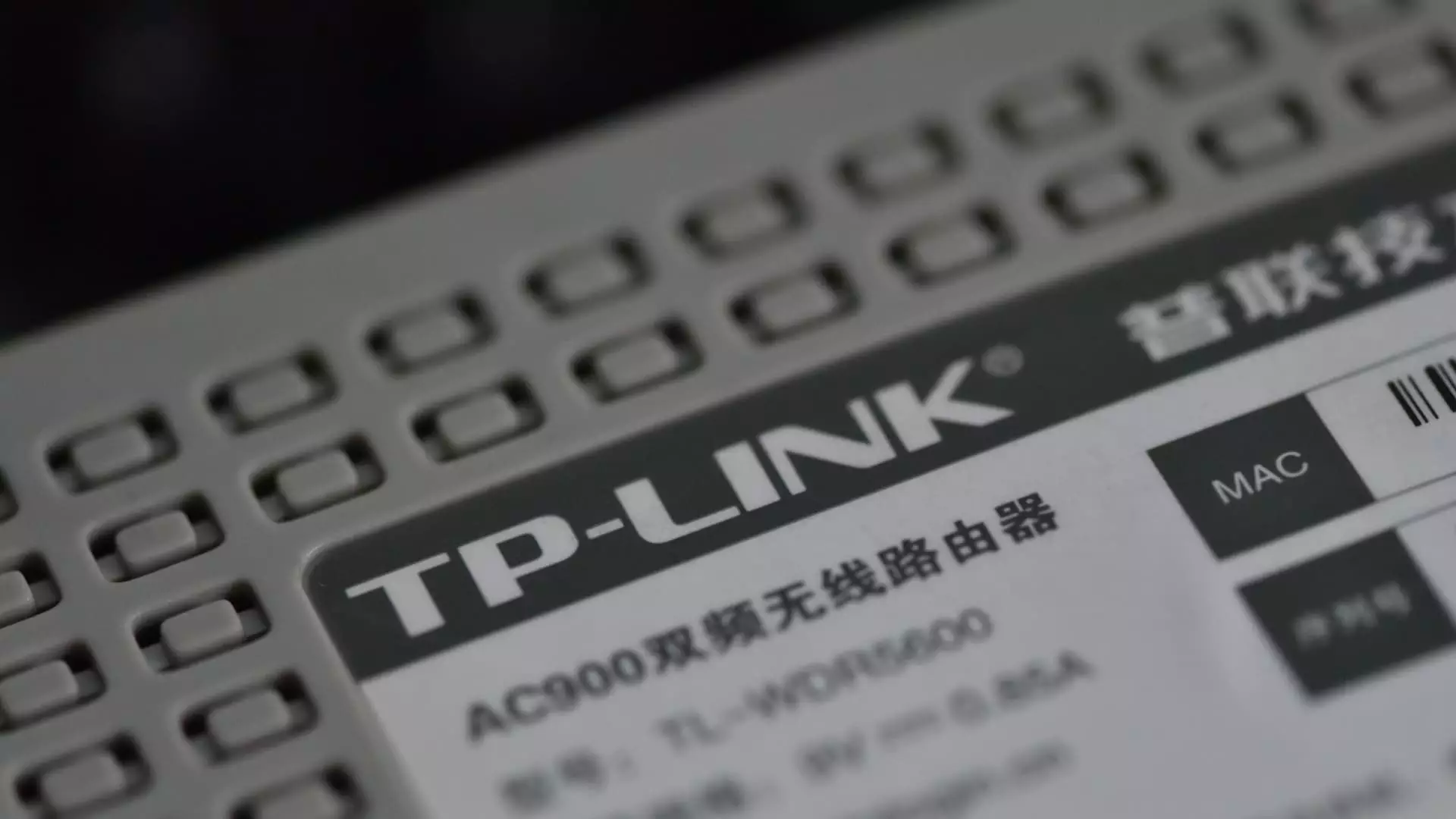In recent months, political discussions around the safety of U.S. technology have intensified, particularly as concerns mount regarding foreign influence and cybersecurity threats. While the ban on TikTok has captured significant media attention, another pressing issue has emerged involving TP-Link, a leading router brand that is now facing scrutiny for its potential links to Chinese espionage activities. As this situation develops, it’s imperative to assess the broader implications of using technology products manufactured by companies potentially aligned with the Chinese government.
TP-Link holds a staggering 65% market share in the American router sector, making the prevalence of their products in both consumer households and critical infrastructure a cause for concern. Lawmakers have spoken out about “unusual vulnerabilities” present in these routers, suggesting they could be exploited by the Chinese government for cyberattacks or data theft. Recently, Representatives Raja Krishnamoorthi and John Moolenaar urged the U.S. Department of Commerce to investigate TP-Link and to consider a ban, reminiscent of the government’s previous actions against Huawei technology. The fear is that these devices could provide backdoor access, allowing foreign entities to tap into sensitive information and communications.
This apprehension is further compounded by the assertion that the technology landscape in China operates under laws that can compel companies to share data with the government, creating a conduit for espionage. The potential for cyberattacks using these routers is not merely speculative; previous instances have linked similar devices to successful infiltrations of European officials’ communications. Such threats expand well beyond federal concerns and extend to state and local infrastructure merits, urging a deeper look into the implications of deploying these routers in various sectors.
Despite the alarm initiated by congressional inquiries, no definitive actions have curbed the ongoing usage of TP-Link routers. Representative Krishnamoorthi has expressed frustration regarding the lack of a proactive plan to mitigate these risks, pointing out the successful but gradual removal of Huawei equipment from federal networks as a model to follow. The imperative for a strategic withdrawal from using TP-Link devices in critical systems or by government entities is echoed by cybersecurity professionals who stress the need to bolster national defenses against potential vulnerabilities.
One possible avenue for action could involve targeting the federal sector first, prohibiting the deployment of these routers in defense and intelligence operations before addressing their broader consumer market presence. Such phased implementation would recognize the challenge of completely eradicating TP-Link routers from consumer landscapes, where they remain popular due to competitive pricing and perceived performance benefits.
While discussions are largely framed within the context of national security, there lies an immediate concern for everyday consumers who continue to use these routers without understanding the risks involved. Industry experts emphasize that compromised routers can lead to lapses in personal data security, leaving individuals vulnerable to a wide range of privacy invasions. Unencrypted communications traveling through these devices pave the way for unauthorized access to browsing histories, personal identifiers, and other sensitive information.
Matt Radolec of Varonis labels unencrypted data transmission as a critical flaw, urging consumers to educate themselves about the differences between secure and insecure communications. Many users remain unaware that while online banking transactions might be encrypted, other forms of data shared through less secure channels could be easily intercepted by malicious entities. This lack of awareness is troubling, highlighting the necessity for both manufacturers and network service providers to better inform users about privacy risks linked to their devices.
Amid the growing discourse, the question remains whether a ban on TP-Link routers and similar products is warranted or if there are alternative measures that could mitigate risks without disrupting their widespread use. The reality is complex; while banning these routers could enhance immediate security, the implications of such a ban on the market—particularly for consumers who rely on these affordable products—could be significant.
An iterative approach, balancing the need for security with consumer accessibility, is crucial. Priorities could involve enhancing regulations on cybersecurity standards for manufacturers, ensuring all devices sold in the U.S. are fortified against potential threats. Additionally, collaboration between government bodies and tech companies could foster the development of safer alternatives that uphold both national security interests and consumer needs.
The situation surrounding TP-Link routers underscores broader vulnerabilities within the U.S. technology infrastructure. Addressing these concerns requires actionable solutions and a concerted effort to raise awareness among consumers about the implications of their tech choices. As debates continue, the need for a strategic approach to securing American cyberspace becomes increasingly clear.

